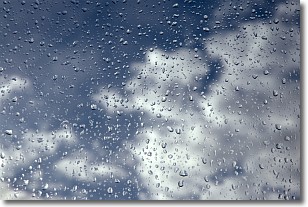Weather Alert in Alaska
Special Weather Statement issued September 7 at 4:24PM AKDT by NWS Anchorage AK
AREAS AFFECTED: Central Aleutians
DESCRIPTION: Ex-typhoon Peipah will lift to the Central Aleutians this evening. There will be two separate peaks of strong winds. One this evening with easterly gusts up to 60 mph at times and the last peak, stronger, Monday morning with northerly gusts around 65 mph at times. A few localized gusts up to 70 mph are possible late Monday morning. There will be a break in strong winds early Monday morning as the low pressure center moves by just to the south and east with northerly winds picking up in earnest on the backside of the system mid-Monday morning. Accompanying the strong winds will be moderate to heavy rain this evening through Monday with rainfall totals 2 inches this evening through Monday night. Winds will significantly decrease starting Monday night and into Tuesday. Residents should secure loose items that can easily be blown around or damaged. Prepare for possible power outages. Travel may be difficult.
INSTRUCTION: N/A
Want more detail? Get the Complete 7 Day and Night Detailed Forecast!
Current U.S. National Radar--Current
The Current National Weather Radar is shown below with a UTC Time (subtract 5 hours from UTC to get Eastern Time).

National Weather Forecast--Current
The Current National Weather Forecast and National Weather Map are shown below.

National Weather Forecast for Tomorrow
Tomorrow National Weather Forecast and Tomorrow National Weather Map are show below.

North America Water Vapor (Moisture)
This map shows recent moisture content over North America. Bright and colored areas show high moisture (ie, clouds); brown indicates very little moisture present; black indicates no moisture.

Weather Topic: What are Cumulonimbus Clouds?
Home - Education - Cloud Types - Cumulonimbus Clouds
 Next Topic: Cumulus Clouds
Next Topic: Cumulus Clouds
The final form taken by a growing cumulus cloud is the
cumulonimbus cloud, which is very tall and dense.
The tower of a cumulonimbus cloud can soar 23 km into the atmosphere, although
most commonly they stop growing at an altitude of 6 km.
Even small cumulonimbus clouds appear very large in comparison to other cloud types.
They can signal the approach of stormy weather, such as thunderstorms or blizzards.
Next Topic: Cumulus Clouds
Weather Topic: What is Drizzle?
Home - Education - Precipitation - Drizzle
 Next Topic: Evaporation
Next Topic: Evaporation
Drizzle is precipitation in the form of water droplets which are
smaller than raindrops.
Drizzle is characterized by fine, gently falling droplets and typically does not
impact human habitation in a negative way. The exception to this is freezing drizzle,
a condition where drizzle freezes immediately upon reaching earth's surface.
Freezing drizzle is still less dangerous than freezing rain, but can
potentially result in hazardous road conditions.
Next Topic: Evaporation
Current conditions powered by WeatherAPI.com




